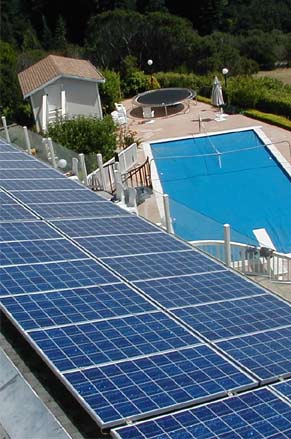
Image Credit: Independent Energy Systems
Modeled after existing programs in Northern California, the Santa Cruz plan is designed to grant 20-year loans to homeowners for solar power and solar thermal installations
Northern California’s Santa Cruz County and the county seat, the City of Santa Cruz, this month approved a program designed to make solar installations affordable for its homeowners.
The plan has two names – the Energy Independence and Economic Stimulus Initiative, and the Santa Cruz Energy Efficiency Program – but one goal: encourage adoption of solar power by as many homeowners as possible.
The basic mechanism is simple. The program finances the installation of solar power and solar heat systems for homeowners who want them and then adds the cost of the loans, which have 20-year terms, to the homes’ property taxes.
Modeled after existing programs in nearby Berkeley and in Sonoma County, the Santa Cruz program will launch with the help of the Santa Cruz Community Credit Union, which will provide bridge loans to homeowners who want to begin installations immediately. Even though the bridge loans will be conventional financing products (not wrapped into property taxes), they can be grandfathered into the Energy Efficiency Program once appropriate solar financing districts have been set up. That process is expected to be completed later this year.
As noted in a recent story in the Good Times Weekly, the program was organized by Ecology Action, a nonprofit environmental consultancy, in collaboration with local officials, the credit union, and installers such as Independent Energy Systems, one of the major installers in the region.
Ecology Action estimates that if a little more than 1,800 homes went solar, the county would easily meet state requirements to return to 1990 levels of carbon emissions by 2030.
The economic benefits to the region could be significant, Colin Clark, program specialist for Ecology Action, told Good Times. If all forms of energy efficiency improvements are accounted for, he said, $2.32 would enter the local economy for every dollar spent on energy efficient projects. And if the pilot program evolves into a full-fledged, permanent program, as planners hope, employment will grow as the local solar industry expands.
Weekly Newsletter
Get building science and energy efficiency advice, plus special offers, in your inbox.















0 Comments
Log in or create an account to post a comment.
Sign up Log in